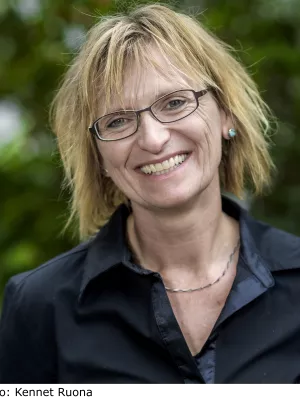
Natascha Kljun
Professor

Upscaling of methane exchange in a boreal forest using soil chamber measurements and high-resolution LiDAR elevation data
Författare
Summary, in English
Forest soils are generally considered to be net sinks of methane (CH4), but CH4 fluxes vary spatially depending on soil conditions. Measuring CH4 exchange with chambers, which are commonly used for this purpose, might not result in representative fluxes at site scale. Appropriate methods for upscaling CH4 fluxes from point measurements to site scale are therefore needed. At the boreal forest research site, Norunda, chamber measurements of soils and vegetation indicate that the site is a net sink of CH4, while tower gradient measurements indicate that the site is a net source of CH4. We investigated the discrepancy between chamber and tower gradient measurements by upscaling soil CH4 exchange to a 100 ha area based on an empirical model derived from chamber measurements of CH4 exchange and measurements of soil moisture, soil temperature and water table depth. A digital elevation model (DEM) derived from high-resolution airborne Light Detection and Ranging (LiDAR) data was used to generate gridded water table depth and soil moisture data of the study area as input data for the upscaling. Despite the simplistic approach, modeled fluxes were significantly correlated to four out of five chambers with R>0.68. The upscaling resulted in a net soil sink of CH4 of -10 mu mol m(-2) h(-1), averaged over the entire study area and time period June-September, 2010). Our findings suggest that additional contributions from CH4 soil sources outside the upscaling study area and possibly CH4 emissions from vegetation could explain the net emissions measured by tower gradient measurements. (C) 2015 Elsevier B.V. All rights reserved.
Avdelning/ar
- Institutionen för naturgeografi och ekosystemvetenskap
- Centrum för miljö- och klimatvetenskap (CEC)
- BECC: Biodiversity and Ecosystem services in a Changing Climate
Publiceringsår
2015
Språk
Engelska
Sidor
393-401
Publikation/Tidskrift/Serie
Agricultural and Forest Meteorology
Volym
214
Länkar
Dokumenttyp
Artikel i tidskrift
Förlag
Elsevier
Ämne
- Climate Research
- Meteorology and Atmospheric Sciences
Nyckelord
- Methane consumption
- Soil temperature
- moisture
- Soil
- Topographic wetness index
- Water table depth
- Methane (CH4) fluxes
Status
Published
ISBN/ISSN/Övrigt
- ISSN: 1873-2240